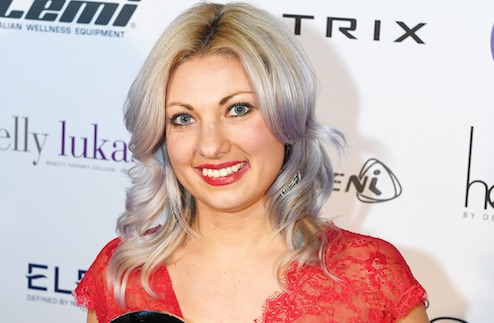How to customise nail forms for all types of enhancements

When creating nail shapes – from square, almond and ballerina, to the more extreme butterfly, stiletto and razor – the perfect form fit is essential for an attractive and long-lasting enhancement.
A key component to the perfect form fit is the necessary tailoring to ensure it sits seamlessly with the natural nail. A c curve can be created with form fit and the requirement for pinching in salon and extreme nails can be eliminated.
If the requirement for form tailoring isn’t respected then several issues can occur, such as gaps that can cause contact allergies, no c curve at all, a wide enhancement result and premature service breakdown. While each finger is different and requires tailoring to perfectly fit the natural nail, the rules remain the same for all shapes.
How to master form tailoring
There are two important components to form tailoring. The first is cutting around the free edge zone to ensure the form fits snuggly under the natural free edge. The easiest way to see where adjustments need to be made is to fit the form in the correct position and then draw around the free edge shape with a white gel pen.
This technique eliminates the guess work, saves time and can be used regardless of the natural nail length – it’s also particularly beneficial for nail biters and those with uneven nails. To provide a smooth and precise cut, sharp and thin curved blade scissors are required to prevent tearing and mistakes to the paper.
The second adjustment required to the nail form is relief cuts, which allow you to close the nail form securely without issue. When the form is placed under the free edge you will notice that it provides a flat surface to create your enhancement. For both strength and aesthetics, a c curve is required and the nail form needs to curve round the nail symmetrically.
If you attempt to close the form without making relief cuts then the paper will crinkle. Using your white gel pen, mark where the corner points of the natural nail free edge are then, at a 45% angle, use form tailoring scissors to cut approximately a 1cm long cut away from the free edge, which will allow you to neatly close your form together tighter.
Important advice
When creating extreme advanced shapes for photographic or live competitions, such as Professional Beauty’s Nail Masters category or editorial work, these shapes must deliver an elongated and well-designed result and the first step to achieving this is all in the form fit, with no pinching required.
You can’t hide any mistakes when it comes to creating extreme shapes so time and precision is paramount. Use the above tips to achieve the desired elegance. If you master the foundation then all other steps will follow with ease.
 Katie Barnes is owner of Katie Barnes Training Academy in Warwickshire and PB’s Nail Professional of the Year 2018.
Katie Barnes is owner of Katie Barnes Training Academy in Warwickshire and PB’s Nail Professional of the Year 2018.


